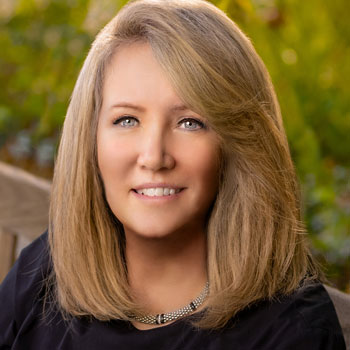
What the X Is Going On? Why Companies Resort to Rebranding
By Andrew Ramspacher
On July 23, billionaire entrepreneur Elon Musk announced that the social networking service he’s controlled since late October would be rebranding from the well-established “Twitter” to “X.”
The transition was effective immediately; a stylized, black-and-white capital X became the new logo on the former Twitter’s website, replacing the familiar blue bird that had been a Twitter staple since 2010.
The intention of the change, according to X CEO Linda Yaccarino, is to symbolize a new era for the former Twitter, where there’s a limitless platform beyond posting, messaging and following other accounts.
“X is the future state of unlimited interactivity — centered in audio, video, messaging, payments/banking – creating a global marketplace for ideas, goods, services, and opportunities,” Yaccarino posted to her X account. “Powered by AI, X will connect us all in ways we’re just beginning to imagine.”
Musk has an apparent affinity for the letter X. It was part of the name X.com he originally gave the payment company he founded in 1999, a company later renamed PayPal. Musk also owns the aerospace company SpaceX.
Musk’s turning of Twitter to X comes during a period when corporate repositioning appears to be trendy. According to UpCity, more than half of U.S. businesses have attempted to rebrand within the last three years. Just two months ago, HBO Max, the on-demand streaming service for HBO, became only “Max.”
Kim Whitler, an expert in marketing strategy and brand management at the University of Virginia’s Darden School of Business, said there are a number of reasons why companies opt to rebrand, including to simply expand appeal.
In September 2018, Dunkin’ Donuts announced it was dropping the last word from its moniker. Nine years earlier, Burlington Coat Factory shed the last two words from its name.
“The companies wanted to be clear that they sell more than donuts and coats, and this required broadening the brand name,” Whitler said. “There is a range of reasons for rebrands, with a range of consequences. Some rebrands may simply be a new logo and advertising to modernize the brand, while other rebrands may substantially shift the positioning of the brand.”

Darden Professor Kim Whitler is an expert in marketing strategy and brand management.
Whitler’s example of a unique, but successful rebrand is PetSmart adopting its current name in 2005 after years of being PetsMart.
This move, Whitler said, was triggered by the company’s need to strengthen its position in the marketplace, as the stock had declined to less than $5 a share behind a commoditized shopping experience. There was a need to better differentiate the company from grocery chains, so they shifted the positioning by focusing on “pet parents” – those customers who cared for their pets like family.
“They essentially only changed the emphasis of different letters to communicate a completely different positioning,” she said, “This subtle shift – from PetsMart to PetSmart – enabled the company to focus on helping customers become better, more capable and smarter pet parents.
“This rebranding – moving from low-cost provider to a more premium solution for high-involvement pet parents – meant that everything had to change. Beyond just the advertising, the store design and layout, product assortment, pricing, hiring, training, and even real estate decisions needed to be reconsidered to support the positioning shift.”
The risk proved rewarding as company stock, once down as it competed head-to-head with the likes of Walmart, Target and other major grocery chains, soared under the tweaked name.
“They needed to carve out a position in the marketplace where they could win, and that required them to do something that is very difficult to do – to move up market,” Whitler said. “They were quite successful in doing so.”
In 2014, PetSmart took the firm private and sold for $8.7 billion to a group of investors. At the time, the stock was around $80 per share.
Not all rebrands can be claimed as wins, however. They call for a heavy investment of time, money and resources.
Whitler said that rebrands, when done in a sophisticated manner, “take development, time and money, in addition to significant testing, to ensure the outcome maximizes the desired impact.”
After name testing, there’s logo design and a number of other marketing experiments to “prove that the rebranding achieves its objectives,” Whitler said.
The National Football League franchise in Washington, D.C., after 82 years as the “Redskins,” spent two seasons as the “Washington Football Team” before adopting the “Commanders” in 2022. The Washington Post estimated the rebrand cost $10 million.
And now, under new ownership since July 20, the Commanders are reportedly considering another name change.
“Whether this is a preference of the new owners or there is empirical evidence of a problem with the new name, having three different names within a few years’ time is not ideal – it’s costly in terms of resources, and it is confusing for fans,” Whitler said.
In some cases, Whitler said, a rebrand is more imperative as a company might feel the need to distance itself from a controversy. In other cases, it might be more of a choice or strategic objective.
Twitter’s rebrand falls in the latter category.
“From public statements, Musk is trying to create a broader platform of products,” Whitler said, “and by rebranding, he grabs the attention of the media, consumers and other stakeholders, helping drive rapid awareness of this shift.
“Now the firm has to go and deliver the rest of the vision – the product.”
This story originally appeared in UVA Today.
The University of Virginia Darden School of Business prepares responsible global leaders through unparalleled transformational learning experiences. Darden’s graduate degree programs (MBA, MSBA and Ph.D.) and Executive Education & Lifelong Learning programs offered by the Darden School Foundation set the stage for a lifetime of career advancement and impact. Darden’s top-ranked faculty, renowned for teaching excellence, inspires and shapes modern business leadership worldwide through research, thought leadership and business publishing. Darden has Grounds in Charlottesville, Virginia, and the Washington, D.C., area and a global community that includes 18,000 alumni in 90 countries. Darden was established in 1955 at the University of Virginia, a top public university founded by Thomas Jefferson in 1819 in Charlottesville, Virginia.
Press Contact
Molly Mitchell
Associate Director of Content Marketing and Social Media
Darden School of Business
University of Virginia
MitchellM@darden.virginia.edu




